Westminster Abbey |
|
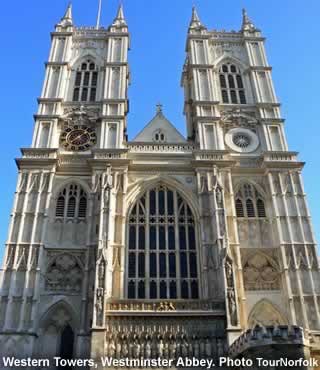 |
|||
England's most visited religious site and a living monument to British History |
|||||||||
Listen to this article |
|||||||||
|
|||||||||
Westminster Abbey is England’s most visited religious site, and a living monument to British history. It has witnessed Coronations and other great ceremonies, and is the final resting place for many British Monarchs. |
|||||||||
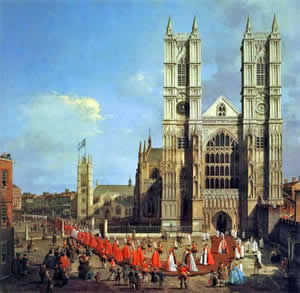 Westminster Abbey with a procession of Knights of the Bath, by Canaletto, 1749 Source WikiMedia (PD) |
|||||||||
The land here used to form part of Thorny Island, a ridge between the River Thames and a tributary called the River Tyburn. A legend says in AD 616 a shrine was established after a local fisherman saw a vision of Saint Peter with salmon caught from the river. Serbert, the first Christian King of the East Saxons, was the earliest person to build a church here in about AD 785 and a small community of monks was established on the island. St. Edward the Confessor then built a new church on the site, which was consecrated in 1065. In 1245 Henry III pulled down the whole of Edward's church except the nave, and replaced it with the present Abbey in a Gothic style, typical for the period. Work continued for the next 300 years with various additions, including the Lady Chapel, added by Henry VII in the early 16th Century and described as the wonder of the entire world. The Western Towers, completed in 1745, were the last addition to the building and built by Nicholas Hawksmoor in a Gothic Revival design. |
|||||||||
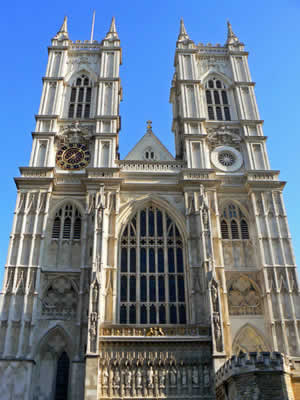 The Western Towers Photo TourNorfolk |
|||||||||
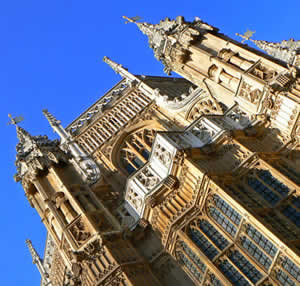 Building Detail Photo TourNorfolk |
|||||||||
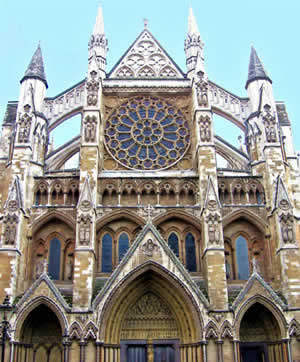 Above the North entrance you can see Flying Buttresses, which take the weight of the massive roof Photo TourNorfolk |
|||||||||
Westminster Abbey has seen the coronation of every English monarch since William the Conqueror, with the exception of Edward V and Edward VIII, who were in fact never actually crowned. It continues to play a crucial role in royal state occasions and was the setting for the coronation of the present monarch, Queen Elizabeth II, as well as the funerals of the late Princess of Wales and Queen Elizabeth the Queen Mother. |
|||||||||
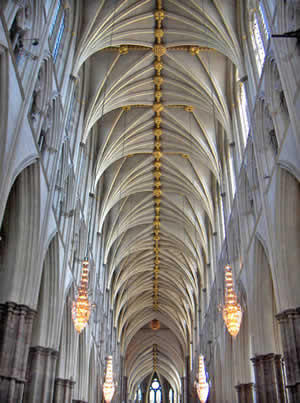 The magnificent stone vaulted Nave roof Photo Eleutheromanic |
|||||||||
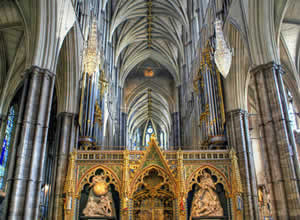 Photo Wolfiewolf |
|||||||||
|
|||||||||
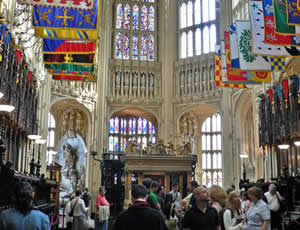 Tourists inside the Abbey Photo Copyright Wolfiewolf |
|||||||||
Many kings and queens, including James I and Charles II, are buried near the shrine of Edward the Confessor or in Henry VII's Lady Chapel. The last sovereign to be buried in the abbey was George II in 1760, and since then burials have taken place at Windsor. The abbey is also crowded with the tombs and memorials of famous British subjects, strangely including the scientist Charles Darwin, famous for his theories of evolution. |
|||||||||
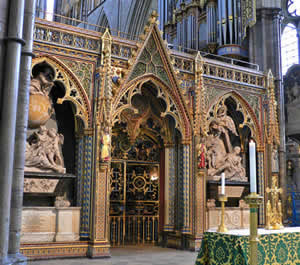 A gilded screen housing the choir, with Sir Issac Newton's tomb in the left part of the screen Photo Copyright Wolfiewolf |
|||||||||
Highlights of the Abbey include the Chapter House, an octagonal building, dating from around 1250 and one of the largest in England. The monks met here every day for prayers and to read a chapter from the rule of St Benedict. Part of the South Transept is well known as Poets' Corner, where writers, playwrights and poets are buried, the first being Geoffrey Chaucer, author of the Canterbury Tales. The North Transept has many memorials to British statesmen and 3 chapels containing some fascinating monuments. The grave of the Unknown Warrior whose remains were brought from Flanders in 1920, is in the centre of the Nave below the magnificent West Window. The Unknown Warrior represents all the soldiers who gave their lives in the First World War, whose bodies could not be identified on the battlefield. It is the only memorial in the Abbey that visitors cannot walk over. |
|||||||||
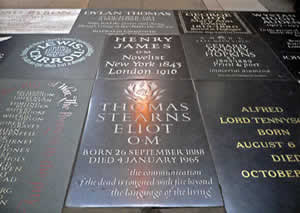 Poets Corner Photo Wolfiewolf |
|||||||||
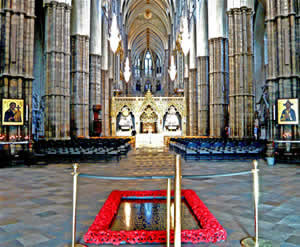 The Grave of the Unknown Warrior Photo Wolfiewolf |
|||||||||
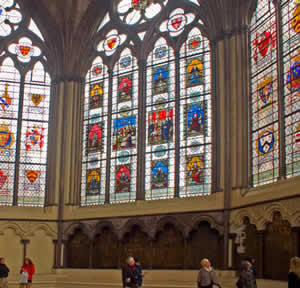 Stained glass windows in the Chapter House Photos Copyright Wolfiewolf |
|||||||||
|
|||||||||
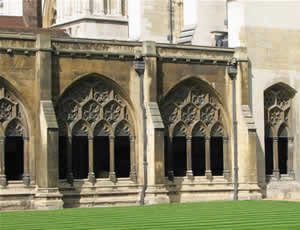 The Cloister, dating from the 13th century Photo © Bernard Gagnon (CC)
|
|||||||||
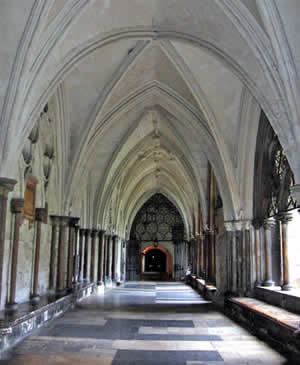 West Cloister Photo OliverN5 |
|||||||||
|
|||||||||
Westminster Abbey is usually open to visitors Monday to Saturday from 10am to 4pm (times do vary). Entry costs around £15 for adults, £6 child. Tel: 020 7222 5152 |
|||||||||
|
Pocket Britain is optimised for use on a smartphone or tablet with internet access. All content is subject to copyright. All reasonable methods have been used to ensure information supplied is accurate at the time of publication. However, it is advisable to check information before relying on it. Privacy Policy |